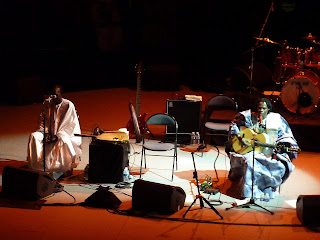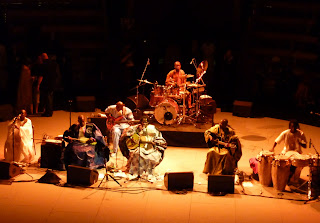A recent article in the New York Times/International Herald Tribune highlights the activities of the Honorable Charles H. Rivkin, U.S. Ambassador to France and Monaco, in building relationships in Muslim communities in France. In the Paris region, many of these communities are found in suburbs, or banlieues, that have been denigrated in the press and virtually abandoned by French politicians for decades. Most of their inhabitants are from, or descended from, persons from North Africa or sub-Saharan (black) Africa.
On April 13, 2010, at the invitation of Ambassador Rivkin, Samuel L. Jackson visited the suburb of Bondy to speak with aspiring film students from a journalism school. Jackson was in France to open the 2nd Beaune International Detective Film Festival, where he was honored for his achievements during his long career in cinema. He responded to the Ambassador’s request to share his background and career path with the students, and to inspire them to believe that they too can succeed in their chosen fields. The Ambassador was at Jackson’s side during this brief but compelling encounter.
Samuel L. Jackson at a student encounter in Bondy
Photo by Joel Saget, Agence France Press/Getty Images
Samuel L. Jackson and attendees at student encounter
Photo courtesy of U.S. Embassy
Photo courtesy of U.S. Embassy
Click here to see a clip of Jackson addressing the students.
According to the NY Times article, the U.S. government’s policy of actively engaging in outreach to Muslim communities around the world was instigated by the 9/11 attacks. The outreach in France was further bolstered after the 2005 riots that began in Seine-Saint-Denis, and spread rapidly to the rest of France. The U.S. has increased its efforts in this regard since President Obama has been in office. The Public Affairs Office currently has a $3 million budget to sponsor urban renewal projects, music festivals, and conferences, as well as to assist minority politicians with communications and electoral strategy.
Earlier in April, the Ambassador attended a preview performance of the Fats Waller musical Ain’t Misbehavin’. The show was produced by New Orleans director Troy Poplous, who brought several students from McDonogh 35 College Preparatory High School in New Orleans to perform with students from music conservatories and middle schools located in the Paris suburbs of La Courneuve and Aubervilliers in the department of Seine-Saint-Denis. Prior to the performance, the Ambassador met with high school students and young leaders of social organizations from three towns in this department, which borders Paris to the northeast. It was during this meeting that he promised to bring “une vedette” (a star) to meet them the next time he visited.
Ain’t Misbehavin’
April 2010
Photo courtesy of Banlieues Blues
Ambassador Rivkin and his staff get an “A+” in my book for supporting the efforts of my non-profit association Les Amis de Beauford Delaney to place a tombstone at the previously unmarked grave of one of the greatest abstract expressionist artists of the 20th century, Beauford Delaney. As well as reaching out to French communities, the Ambassador also considers it important to champion the American community in Paris. He wrote a wonderfully encouraging letter, which Les Amis used to promote its fundraising efforts. He also offered to host a reception in Delaney’s honor once the tombstone was in place.
The Honorable Charles H. Rivkin
Photo courtesy of the U.S. Embassy
The Public Affairs department of the Embassy and Les Amis de Beauford Delaney are co-sponsoring this reception to be held at the George C. Marshall Center in Paris’ 1st arrondissement on October 14, 2010.
************
Each month, our Paris Insights newsletter presents the hidden jewels that comprise the "real" Paris – the people and places that are the true heart and soul of the city. Click here to sign up for our newsletter announcements and to receive our free guide called "Practical Paris”!Entrée to Black Paris!™ is a Discover Paris! blog.



























